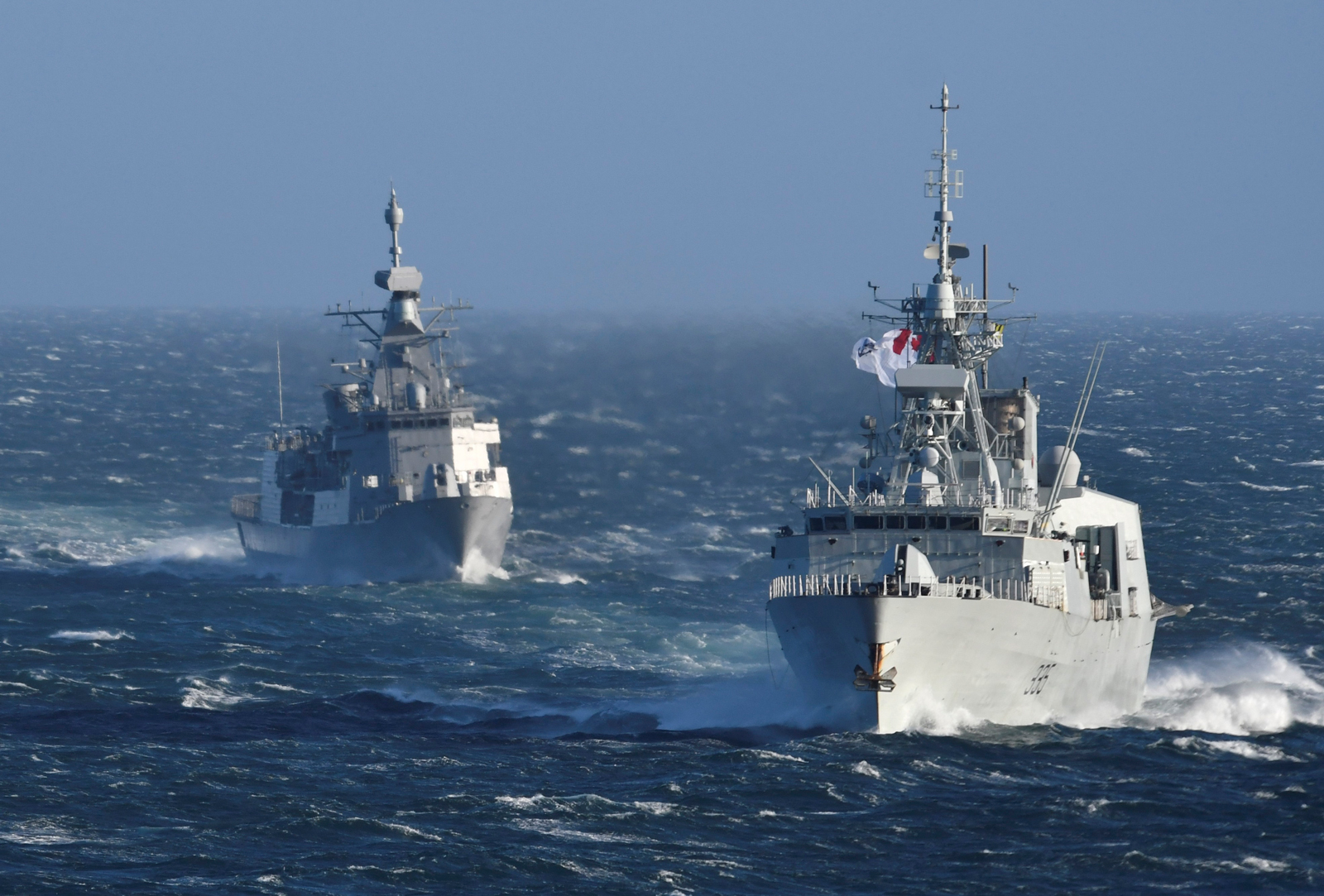Mitigating environmental impact during Trident Fury
By Lookout on Dec 07, 2020 with Comments 0

HMNZS Te Kaha (left) and HMCS Calgary (right) conduct a sail past Esquimalt Lagoon as Te Kaha heads back to New Zealand after spending 18 months in Esquimalt completing an extensive upgrade and refit program.
SLt K.B. McHale-Hall
MARPAC Public Affairs
––
The waters surrounding Vancouver Island are home to more than the usual inhabitants this December.
Exercise Trident Fury (TF20) is underway off the coast of Vancouver Island. It is a task group of Canadian and American maritime assets training to operate together. They are also training to work respectfully within Canada’s marine environment.
The environmental responsibility for the Pacific Fleet falls under Maritime Forces Pacific Formation Safety and Environment (FSE).
“Environmental sustainability is a top priority for the Royal Canadian Navy and it has become increasingly important as we operate in a global 21st century environment,” said Duane Freeman, MARPAC FSE Officer. “The navy is continuously investing in science to better understand our impacts and to improve our procedures so we conduct the training necessary to maintain operational readiness, while mitigating our environmental marine footprint.”
Aircraft and ships participating in TF20 are guided by detailed environmental exercise direction.
“FSE worked closely and extensively with exercise planners to help shape and guide the task group exercise,” said Tracy Cornforth MARPAC Formation Environment Officer. “The environmental impact assessment included a description of key activities, potential effects, and strict mitigation measures to be employed. Environmental mitigation measures are incorporated for a range of exercise activities including vessel movement, aircraft movement, sonar transmissions, surface firings, and use of pyrotechnics.”
The navy works collaboratively with Fisheries and Oceans Canada (DFO) and Transport Canada to formulate guidance and follow policy.
“In advance of TF20, we integrated our planning with DFO guidance. DFO provided recommendations to bolster mitigations and provided guidance on situations to avoid. We took that information and incorporated it into the Environmental Impact Assessment guidance for the task group exercise.”
The well-being of marine species is central to the plans and actions of the navy during TF20. Prior to sailing, all participating units attended a marine species awareness training session. Adapting to the current pandemic, this training was delivered virtually via MS Teams. Training included how to report marine mammal observations, and reinforced existing marine mammal mitigation procedures.
This will be the first time the military uses the Canadian Coast Guard Marine Mammal Desk to report marine mammal sightings and their locations in the vicinity of the exercise area.
During the exercise, observations of marine mammals, either from ships or aircraft, are to be immediately reported to the task group command team and shared with all participants.
In addition to this communication, ships are required to submit a Whale Report to the B.C. Cetacean Sighting Network through an online application. This information will further enhance the scientific community’s understanding of marine mammal species in offshore areas during the winter months, which will also assist MARPAC with future exercise planning.
Avoidance of specific military activities in sensitive and protected marine habitats is always incorporated in exercise planning, including that of TF20. Protected areas, such as critical habitat, are identified to all participating units and appear on vessel navigation systems as an Additional Military Layer. This includes the geospatial boundaries of all legally protected areas within the maritime operating area, and specific military procedures or activities that are restricted in each area.
“FSE works closely with Canadian Fleet Pacific planners and senior leadership to ensure we are considering all ongoing activities within the Pacific Region. There is a significant coordinated government effort to protect marine species, such as the Endangered Southern Resident Killer Whale. We track the various initiatives, and work with other government departments and industry stakeholders to ensure our activities are coordinated and planned in a way that minimizes impact to the environment. This in turn promotes long-term environmental sustainability that facilitates MARPAC force generation activities within the Pacific region,” said Freeman.
––––
Filed Under: Top Stories
About the Author:





